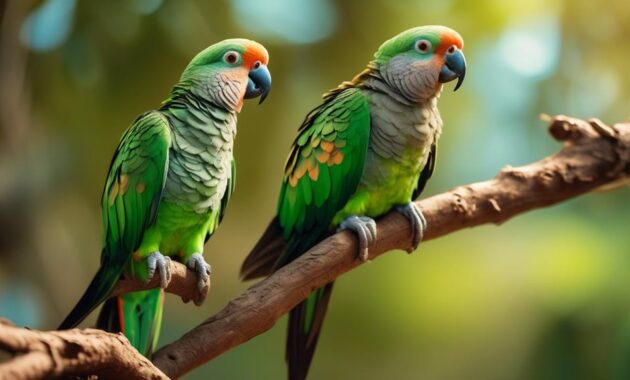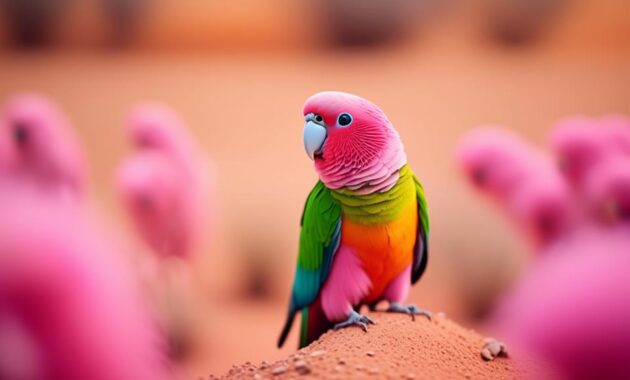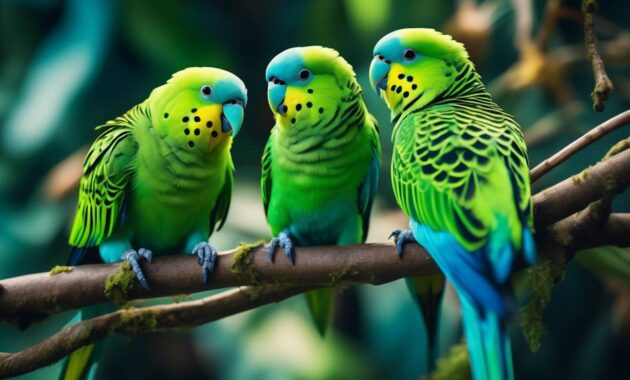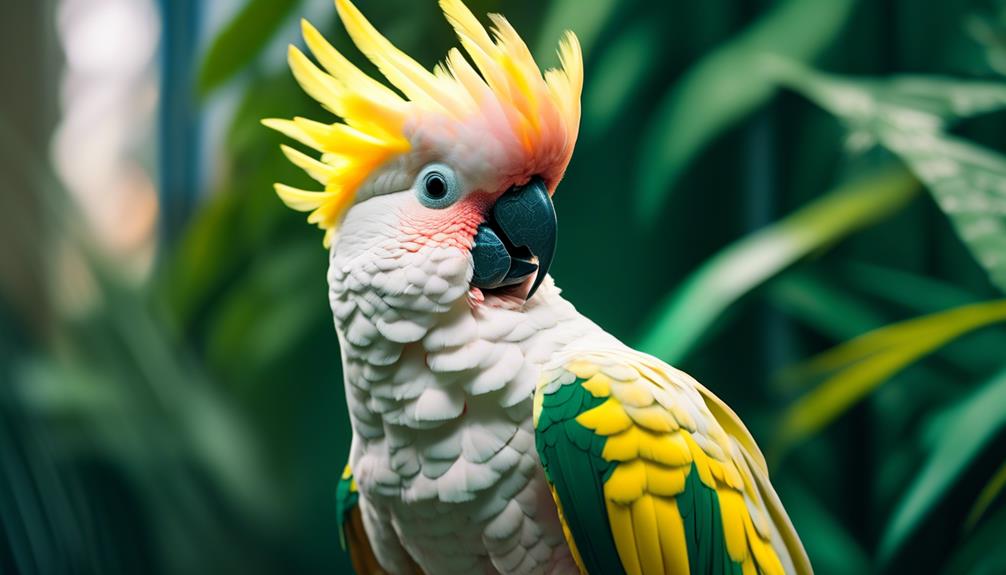
So, you think you’ve seen it all when it comes to birds? Well, prepare to be pleasantly surprised by the exquisite and marvelous Mitchell’s Cockatoo.
This regal creature, with its stunning appearance and unique characteristics, is sure to captivate your attention. From its distinct head shape to its magnificent crest, the Mitchell’s Cockatoo is truly a sight to behold.
But there’s more to this majestic bird than meets the eye. Stay tuned as we unravel the mysteries and delve into the fascinating world of the Mitchell’s Cockatoo. You won’t want to miss a single detail.
Key Takeaways
- The Mitchell’s Cockatoo is a medium-sized bird species native to Australia, known for its distinctive pink and white coloration.
- They prefer woodlands with specific tree growth, such as acacia, sheoaks, cypress pine, and eucalyptus trees.
- The loss of habitat poses a threat to their population, emphasizing the importance of protecting their natural environment.
- Mitchell’s Cockatoos have unique vocal abilities and are quieter compared to other cockatoos, with a greater tendency to play and be quiet.
Physical Characteristics of Mitchell’s Cockatoo
Mitchell’s Cockatoo is a medium-sized bird species native to Australia, known for its distinctive physical characteristics. This beautiful bird measures about 14 inches in size and can live up to 80 years.
It belongs to the Cockatoo family and is known for its pink and white coloration. When it comes to sounds, Mitchell’s Cockatoo is vocal and can mimic basic words, whistles, and alarms. However, they’re quieter compared to other cockatoos and tend to make more natural calls such as exotic chirps and high pitched alarm calls.
In terms of appearance, Mitchell’s Cockatoo has a distinct head shape and a stubby beak. The most remarkable feature is its large and magnificent crest. Males are slightly larger than females, making them even more stunning.
Native Region and Habitat of Mitchell’s Cockatoo
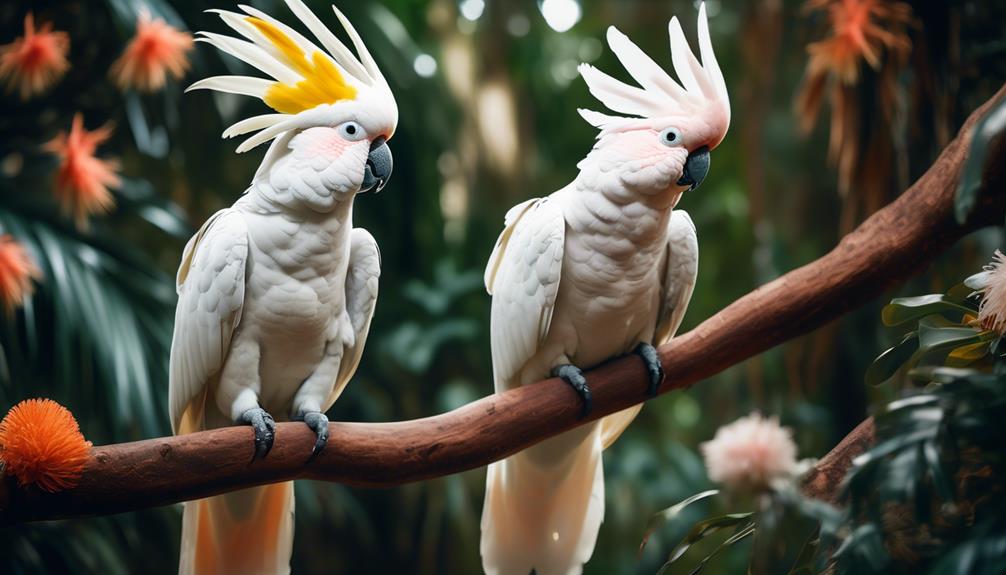
The native region and habitat of Mitchell’s Cockatoo can be found in dry inland areas with tree growth in Australia. This majestic bird prefers woodlands with acacia, sheoaks, cypress pine, and eucalyptus trees. They’re often seen flying alongside galahs and corellas, adding to the beauty of the landscape.
Unfortunately, loss of habitat poses a threat to their population. To ensure their survival, it’s crucial to protect their natural environment. By doing so, we can continue to admire their magnificent appearance and appreciate their unique presence in the Australian wilderness.
Overview of Mitchell’s Cockatoo’s Appearance
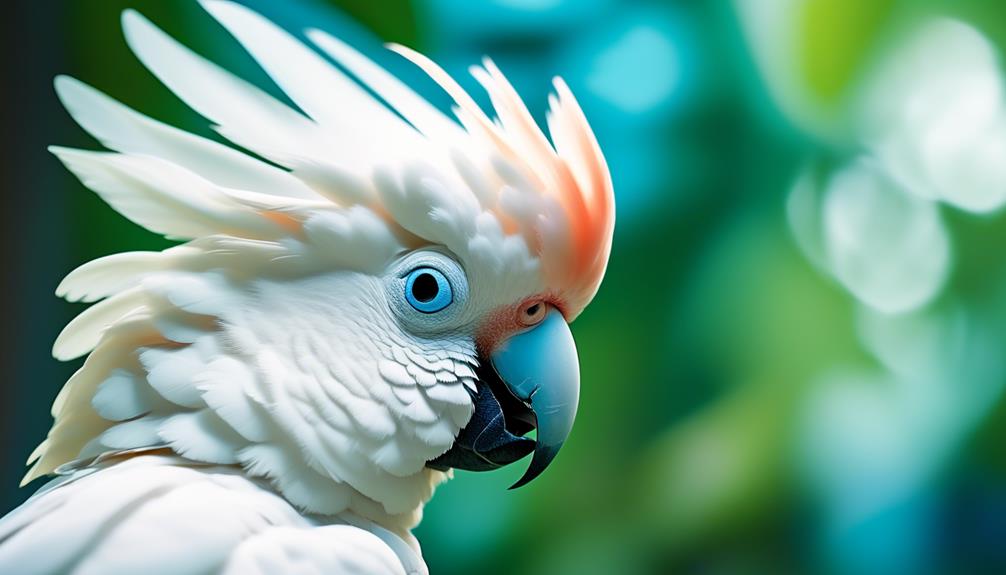
With its medium size and distinct head shape, the Mitchell’s Cockatoo is known for its magnificent appearance. This medium-sized cockatoo boasts a stubby beak and a visibly larger and magnificent crest. Males are slightly larger than females, adding to their overall beauty. Their colors are a stunning combination of pink and white, making them a sight to behold.
When it comes to their speech and sounds, Mitchell’s Cockatoos are quieter and more prone to natural calls. They mimic basic words, whistles, and alarms, but are less loud and incessant talkers compared to other cockatoos. Their greater tendency to play and be quiet adds to their charm.
In terms of care and feeding, a recommended diet includes commercial cockatoo seed or pellet mix, supplemented with fresh fruits and vegetables for vitamins. Occasional cooked rice, corn, or chicken can also be given. Regular baths or showers are essential for their hygiene, preventing feather loss and skin diseases.
Speech and Sounds of Mitchell’s Cockatoo
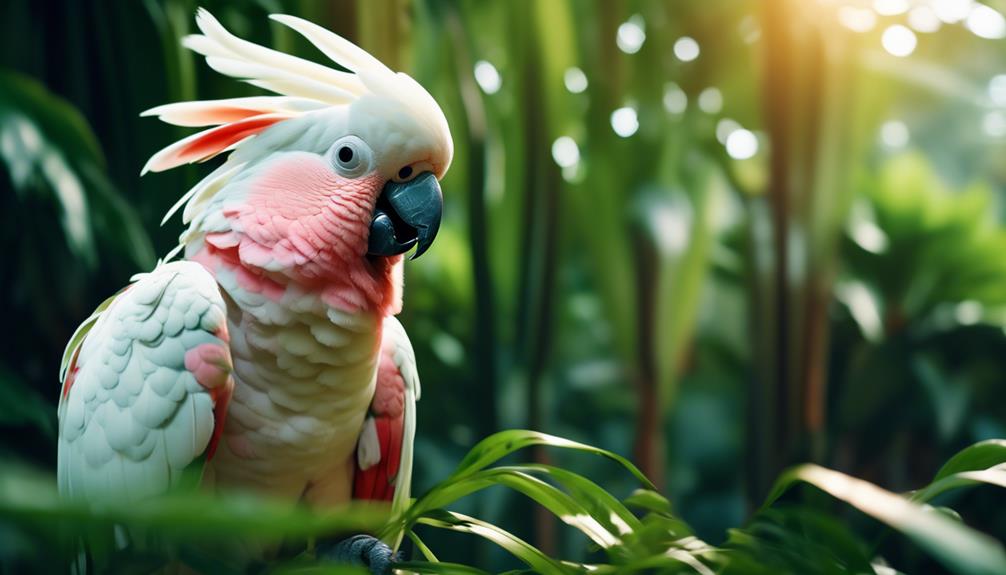
Moving on to the speech and sounds of Mitchell’s Cockatoo, you’ll be intrigued by their unique vocal abilities and natural calls.
Here are some interesting facts about their communication:
- Quieter and more prone to natural calls: Mitchell’s Cockatoos are generally quieter compared to other cockatoos. They’re more inclined to use their natural calls rather than mimicking human speech.
- Mimics basic words, whistles, and alarms: While not as proficient as some other parrot species, Mitchell’s Cockatoos can still mimic basic words, whistles, and alarms. They’ve the ability to imitate certain sounds in their environment.
- Natural calls are exotic chirps and high pitched alarm calls: The natural calls of Mitchell’s Cockatoos are a combination of exotic chirps and high pitched alarm calls. These unique vocalizations contribute to their overall majestic presence.
With their quieter nature and unique vocal abilities, Mitchell’s Cockatoos add a touch of elegance to the avian world.
Care and Feeding Tips for Mitchell’s Cockatoo
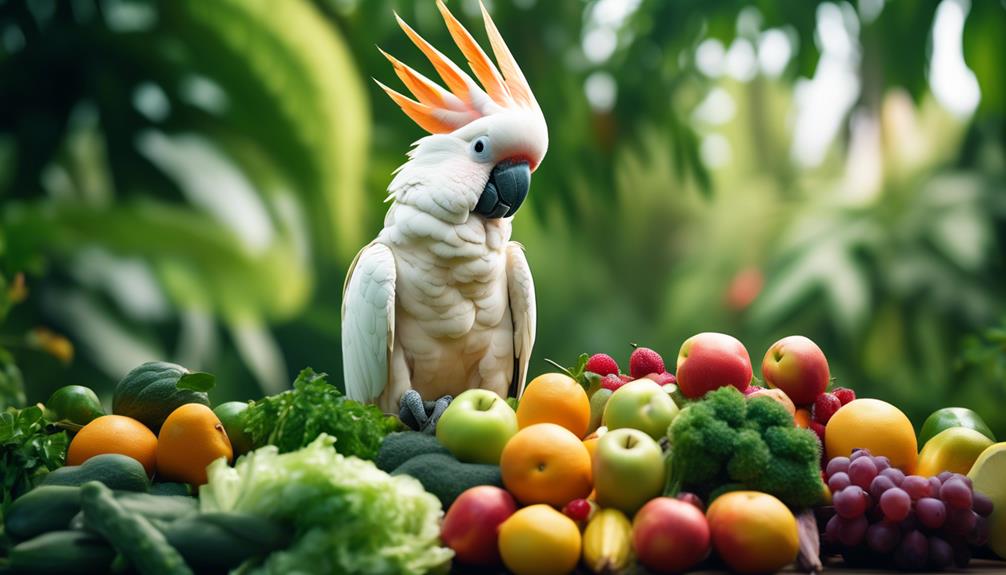
To properly care for your Mitchell’s Cockatoo, it’s important to provide a balanced diet and regular hygiene practices.
A recommended diet for your cockatoo is a commercial cockatoo seed or pellet mix, which provides the necessary nutrients for their health. You can also supplement their diet with fresh fruits and vegetables to ensure they receive an adequate amount of vitamins. Occasionally, you can offer them cooked rice, corn, or chicken as a treat.
In terms of hygiene, regular baths or showers are crucial to prevent feather loss and skin diseases. This will help keep your Mitchell’s Cockatoo’s plumage in pristine condition.
Threats to Mitchell’s Cockatoo’s Habitat
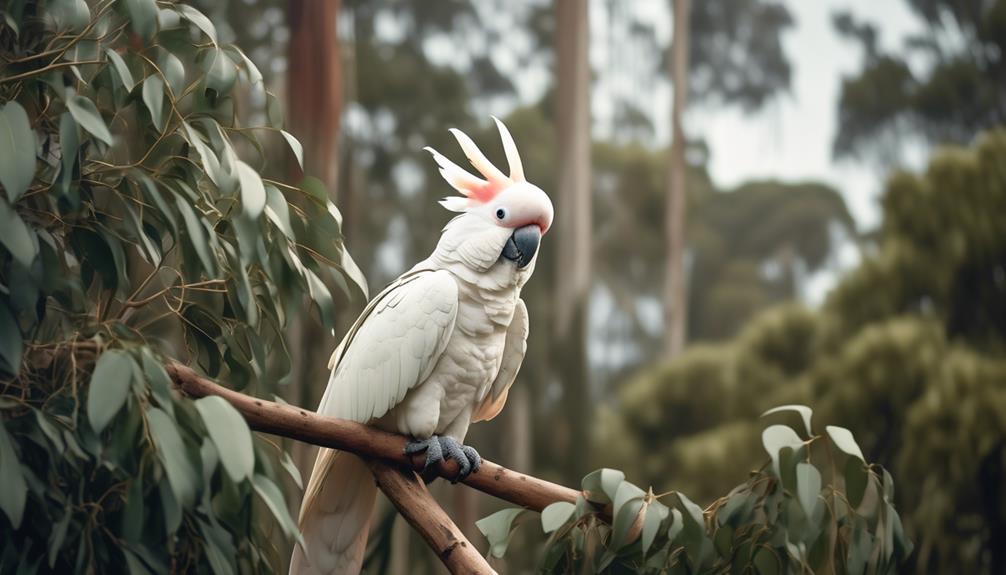
To ensure the long-term survival of your Mitchell’s Cockatoo, it’s important to be aware of the threats that pose risks to its natural habitat. Here are three major threats that need to be addressed:
- Deforestation: The clearing of trees for agriculture, urbanization, and logging has led to the loss of habitat for Mitchell’s Cockatoo. Without suitable trees to nest and feed on, their population declines.
- Climate change: Rising temperatures and changing weather patterns affect the availability of food and water sources for these cockatoos. Droughts and heatwaves can lead to food scarcity and dehydration, impacting their survival.
- Illegal trade: The demand for Mitchell’s Cockatoos as pets has fueled illegal trapping and trade. This not only disrupts their population but also encourages the destruction of their habitat.
Fun Facts About Mitchell’s Cockatoo
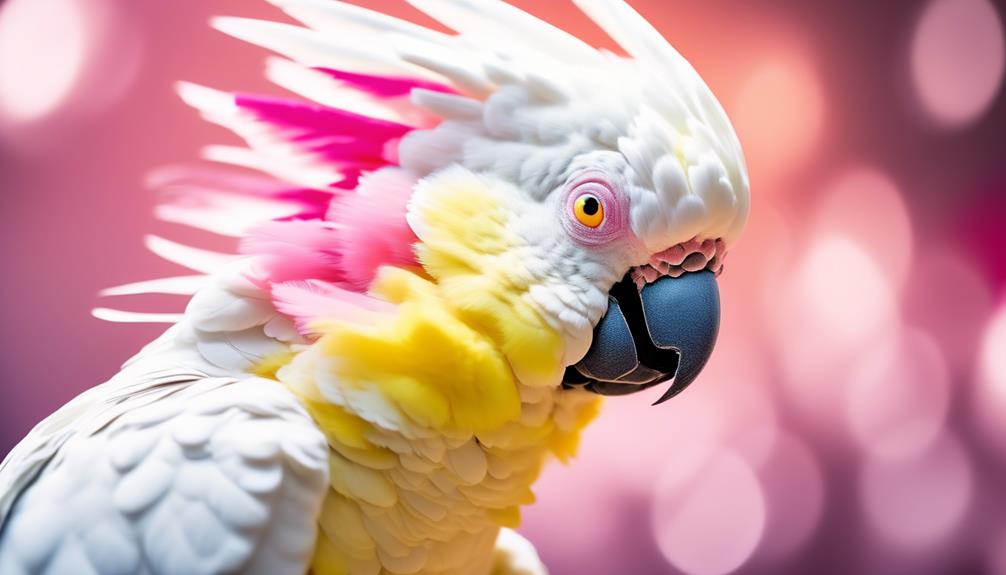
Mitchell’s Cockatoo is known for its distinctive appearance and unique behaviors. Here are some fun facts about this marvelous bird.
Did you know that Mitchell’s Cockatoo can live up to 80 years? That’s a long lifespan for a bird! And speaking of long, their crest is visibly larger and truly magnificent. Males are slightly larger than females, adding to their beautiful appearance.
When it comes to sounds, Mitchell’s Cockatoo is quieter compared to other cockatoos. They’re more prone to natural calls and mimic basic words, whistles, and alarms. But they aren’t loud and incessant talkers.
Another interesting fact is that they love to play and be quiet. So if you’re looking for a bird companion that’s not too noisy, Mitchell’s Cockatoo might be the perfect choice.
Frequently Asked Questions
How Do Mitchell’s Cockatoos Communicate With Each Other?
Mitchell’s cockatoos communicate with each other through vocalizations, mimicking basic words and alarms. They also make exotic chirps and high pitched alarm calls. They tend to be quieter and less talkative compared to other cockatoos.
Are Mitchell’s Cockatoos Good Pets for Families With Small Children?
Mitchell’s cockatoos are not recommended as pets for families with small children. They are quieter and less talkative compared to other cockatoos, but they require specific care and attention due to their long lifespan and unique needs.
What Are Some Common Health Issues That Mitchell’s Cockatoos May Face?
Mitchell’s cockatoos may face common health issues such as feather loss and skin diseases. Regular baths or showers can help prevent these problems. Keep an eye out for any signs of illness and consult a veterinarian if needed.
How Do Mitchell’s Cockatoos Build Their Nests?
Mitchell’s cockatoos build their nests by using their beaks and claws to excavate cavities in tree trunks. They line the nest with twigs and chewed wood chips. The female lays eggs inside the nest, and both parents take turns incubating them.
Can Mitchell’s Cockatoos Be Found in Captivity Outside of Australia?
Yes, Mitchell’s Cockatoos can be found in captivity outside of Australia. They are sought after for their beauty and captivating personality. Many bird enthusiasts around the world enjoy keeping them as pets.
What Makes Mitchell’s Cockatoo and Amazon Parrots Stand Out as Exquisite and Charming Birds?
Mitchell’s cockatoo and amazon parrots are part of the charming amazon parrot family, known for their vibrant colors and intelligent personalities. These birds stand out for their ability to mimic human speech and their social nature, making them popular pets among bird enthusiasts. Their striking beauty and playful temperament make them truly exquisite.
Conclusion
In conclusion, the Mitchell’s Cockatoo is a truly captivating and remarkable bird. With its exquisite beauty, unique traits, and long lifespan, it’s a species that deserves our admiration and protection.
From its distinct head shape to its quieter nature and ability to mimic sounds, this bird is truly one-of-a-kind.
By understanding and providing proper care for the Mitchell’s Cockatoo, we can ensure its optimal health and well-being for years to come.
Let’s continue to cherish and appreciate the extraordinary world of the Mitchell’s Cockatoo.


